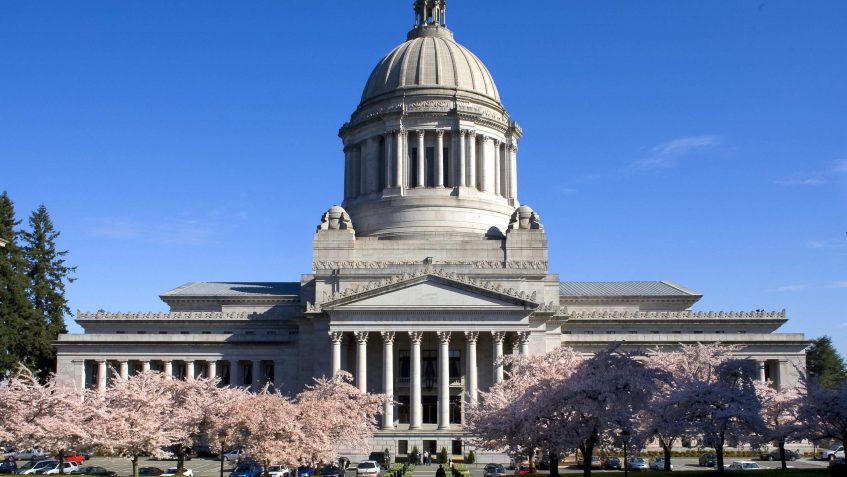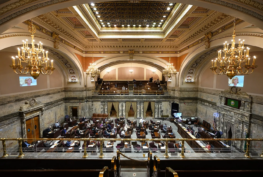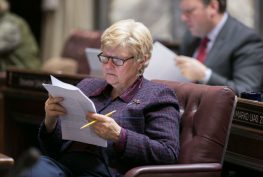Ever since the revenue shortfalls of the Great Recession began placing increased pressure on our state budgets, arguments have raged over whether the state is spending more or less on public services. Democrats cite year after year of cuts in services, while Republicans point to dollar figures that suggest the state spent more in taxes than in the year before. Who’s right?
Normal
0
false
false
false
EN-US
X-NONE
X-NONE
/* Style Definitions */
table.MsoNormalTable
{mso-style-name:”Table Normal”;
mso-tstyle-rowband-size:0;
mso-tstyle-colband-size:0;
mso-style-noshow:yes;
mso-style-priority:99;
mso-style-parent:””;
mso-padding-alt:0in 5.4pt 0in 5.4pt;
mso-para-margin-top:0in;
mso-para-margin-right:0in;
mso-para-margin-bottom:10.0pt;
mso-para-margin-left:0in;
line-height:115%;
mso-pagination:widow-orphan;
font-size:11.0pt;
font-family:”Calibri”,”sans-serif”;
mso-ascii-font-family:Calibri;
mso-ascii-theme-font:minor-latin;
mso-hansi-font-family:Calibri;
mso-hansi-theme-font:minor-latin;
mso-bidi-font-family:”Times New Roman”;
mso-bidi-theme-font:minor-bidi;}
Depending on how you define dollars, both sides are. A recent analysis by the non-profit Economic Opportunity Institute, on whose board I serve, explains how this can be so.
In seven of the past 11 years, the state has spent more money than in the previous year — if you don’t account for inflation. For instance, as you can see in this chart compiled by the institute, the state budget was about $12 billion in 2002 compared to nearly $16 billion this year — an increase on paper of about $4 billion. But a dollar today doesn’t buy what it bought in 2002 any more than a student can attend college today for what it cost 11 years ago.
In real dollars the story is quite different: Factoring in inflation, the same chart shows that this year’s $16 billion budget is more than $2 billion smaller than the cost of government 11 years ago. In other words, in the real world as opposed to the on paper world, state spending has shrunk over the past decade.
Meanwhile the cost of prisons and other essential public safety services have continued to rise, so other state services have been reduced radically to make up the difference. For instance, state funding for the University of Washington has been cut in half since 2008 and funding for state parks has been slashed by more than 80 percent since 2009.
Another overlooked factor is our increase in population. We have more people to serve every year in our public schools, health clinics, colleges and corrections system. Every child who arrives at the school house door creates additional state spending of more than $6,000 a year.
The reduction in public services is compounded by the trends in private sector wages and benefits and other factors. For instance, this chart shows how the number of Washingtonians living in poverty or near poverty has steadily risen over the past four years. And this chart shows how private-sector firms in Washington state have been steadily providing fewer benefits–less health insurance, less paid vacation, less sick leave and less retirement security over the last decade. At the same time, this chart shows how the average cost of tuition and fees at Washington’s public colleges and universities has risen from $2,500 in 1965 to $12,500 today.
So the next time you hear someone debating whether the state spends more or less than it did in past years, there are two possible answers. On paper, it looks like more. But the real-dollar answer is less. That’s why Washingtonians in every community in our state are feeling the pinch.
State Senator, 33th Legislative District





